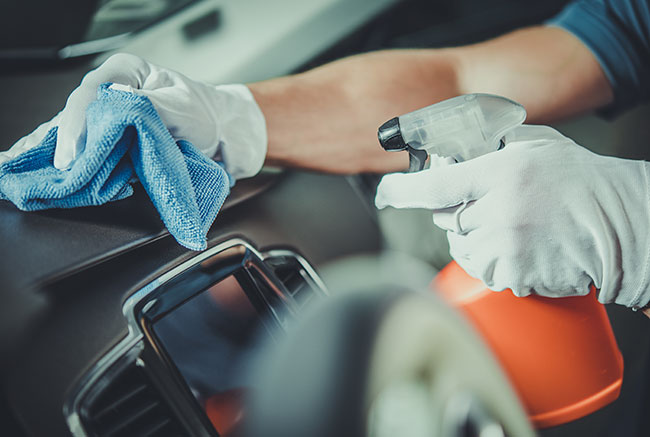••• automotive research
Vehicle shoppers willing to pay for cleaner interior surfaces and air
 The pandemic-fueled need to clean frequently touched surfaces extends to automobile interiors, to the point of potentially influencing future car and truck purchases, according to a December 2020 survey of 500 vehicle users in each of the global automotive core markets of the U.S., Germany, China and Japan by Japan-based chemical company Asahi Kasei.
The pandemic-fueled need to clean frequently touched surfaces extends to automobile interiors, to the point of potentially influencing future car and truck purchases, according to a December 2020 survey of 500 vehicle users in each of the global automotive core markets of the U.S., Germany, China and Japan by Japan-based chemical company Asahi Kasei.
Asked about their preferences in regard to the future automotive interior, respondents expressed a readiness to pay for solutions that provide safe surfaces and air inside the car. Nearly 90% of U.S. respondents looking to purchase a large or luxury vehicle would be willing to spend $750 for a “surface protect” package (a hypothetical, optional package with interior materials that provide antiviral/antimicrobial properties and stain- and odor-resistance) and nearly 80% of prospective truck and SUV buyers would be willing to spend the same amount.
A similar finding was seen in regard to car interior air quality. Nearly 90% of U.S. respondents looking to purchase a large or luxury vehicle and over 80% of truck and SUV buyers would be willing to spend $750 for a “cabin protect” package (a hypothetical, optional package including an automated ventilation system that eliminates microbes and pathogens in cabin air).
••• shopper insights
Study identifies back-to-school shopping struggles
 The 2021-2022 back-to-school season is quickly approaching and parents, students and teachers alike are grappling with unconfirmed plans for virtual, physical and hybrid classrooms, leading to confusion of what back-to-school supplies they actually need.
The 2021-2022 back-to-school season is quickly approaching and parents, students and teachers alike are grappling with unconfirmed plans for virtual, physical and hybrid classrooms, leading to confusion of what back-to-school supplies they actually need.
Data services company Inmar Intelligence surveyed over 1,000 U.S. consumers to better understand how they are preparing for the upcoming school year and the challenges they’re facing. Marketers who take note of these issues can earn customer loyalty by providing solutions to shoppers’ thorniest problems.
Among the top-cited difficulties: 43 percent of shoppers struggle to plan/make/pack lunches and snacks for school; 42 percent struggle with making dinners after school; 42 percent of shoppers have a hard time finding healthy options for lunches and snacks; 40 percent struggle to balance virtual school with work; 37 percent are challenged by planning/scheduling after-school activities; and 36 percent of students and teachers struggle to stay organized in their classes.
How do shoppers plan to make their purchases? Many are opting for a hybrid approach. For school supplies, 35 percent of shoppers will buy online and 60 percent will buy in-store. Apparel shopping will also be a mix of online (53 percent) and in-store (56 percent).
